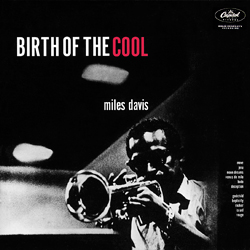Miles, Mulligan and more
On February 10, I will again be performing Miles Davis' classic The Birth of the Cool organized and led by my dear friend Thomas Helton. This concert will be slightly different, however, in that it will feature three new arrangements by yours truly written specifically for the nonet. In addition to that, the second half of the concert will feature the various incarnations of the famous Gerry Mulligan Quartets.
This concert is being produced by Richard Nunemaker for the Houston Tuesday Music Club on Sunday, February 10 at Emerson Unitarian Church at 4pm.You can hear Thomas, Richard and myself discussing the concert on KUHF's "The Front Row" by clicking here.
Of the new arrangements, I chose to write three features, one each for alto saxophone ("Opus de Funk"), trombone ("Lament") and baritone saxophone ("Ghengis"). Here's a playlist of the concert, in backwards order:
"Opus de Funk" is really just a transcription and re-orchestration from the 1959 album, Art Pepper + Eleven: Modern Jazz Classics. While the original Birth of the Cool selections are wonderful, there isn't a straightforward blues among any of them. This recording has long been one of my favorites, with plenty of room for the alto to blow through the blues. That, plus the excellent arrangement by Marty Paich make this a great pairing to the original album (and great practice for me to learn how the unusual nonet instrumentation can be handled).
"Lament" is trombonist J.J. Johnson's well-known jazz ballad. I wanted to pay tribute to Johnson's presence on the original recordings and feature his talents as a great writer, since this ballad is truly one of the best written in the idiom. My arrangement sought to capture the "Gil Evans sound" heard most prominently on "Moon Dreams". There were many things to consider here: where to draw the line on using dissonance, Gil's careful placement of voicing, the development of the main theme throughout the piece, and so on. It was a real challenge, as students of Gil Evans' style are surely aware.
Finally, I chose "Ghengis" from Gil's Guests written by the late, obscure multi-saxophonist Gil Mellé. Mellé was a bit of a renaissance man in modern music, he dabbled in various ensemble sizes and structures, had a strong interest in atonal music and unusual forms and was even a featured painter on several jazz LPs of his peers in the late 1940s. "Ghengis" is an unusual tune with an unusual construction. The melody itself is raw and atonally inclined, with several instruments providing a (somewhat) pointillistic melodic shape. While the tune is just a head arrangement, there is an obvious tape splice to include the improvised solos before returning to this head to end the piece. Mellé's baritone sax is front and center, however, and the original arrangement made for a great place to jump off and experiment with combinations and sounds within the nonet.
Enjoy the music and I'll see you at the concert!






